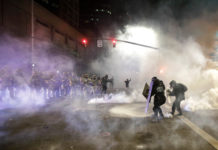On Wednesday, when The New York Times published an op-ed by Republican Sen. Tom Cotton of Arkansas in favor of using the military to “restore order” in the face of widespread urban rioting, the reaction of many journalists, including journalists working at the Times itself, was not to take issue with the argument.
It was instead to take aim at the Times for publishing it.
This happens quite regularly now, usually in response to columns penned by the paper’s stable of conservative and centrist columnists. But the reaction to Cotton has been especially severe because of the astonishing events of the past week, with protests taking place in well over a hundred cities and towns, riots breaking out in numerous places, and the president taking precipitous actions in response to disorder in the nation’s capital. Given this context, many apparently believe that Cotton’s law-and-order column needs to be classified as dangerous — something pushing an idea beyond the pale that the Times should never have disseminated to the world — even though he clearly advocated the use of force only against rioters and looters and not against those engaging in peaceful protest.
This reaction tells us a lot — about how journalists view the Times and other mainstream media outlets, about how these journalists see their own role in the culture, and most of all, about how they think about ideas and their relation to politics.
It is now quite common among journalists to think of opinions not as arguments to be advanced, engaged with, and potentially refuted, but as a kind of viral propaganda with the power to convert readers to new holistic outlooks, much like the spread of a religious fervor during a revival.
Damon Linker – The Week – June 4, 2020.




